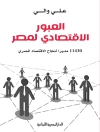The easy way to master the art of auditing
Want to be an auditor and need to hone your investigating skills? Look no further. This friendly guide gives you an easy-to-understand explanation of auditing — from gathering financial statements and accounting information to analyzing a client’s financial position. Packed with examples, it gives you everything you need to ace an auditing course and begin a career today.
- Auditing 101 — get a crash course in the world of auditing and a description of the types of tasks you’ll be expected to perform during a typical day on the job
- It’s risky business — find out about audit risk and arm yourself with the know-how to collect the right type of evidence to support your decisions
- Auditing in the real world — dig into tons of sample business records to perform your first audit
- Focus on finances — learn how both ends of the financial equation — balance sheet and income statement — need to be presented on your client’s financial statements
- Seal the deal — get the lowdown on how to wrap up your audit and write your opinion
- After the audit — see the types of additional services that may be asked of you after you’ve issued your professional opinion
Table des matières
Introduction 1
Part I: Getting an Auditing Initiation 7
Chapter 1: Taking Auditing into Account 9
Chapter 2: The Role of Auditing in Public Accounting 21
Chapter 3: Understanding Professional Standards and Ethics 33
Part II: Performing the Initial Auditing Steps 45
Chapter 4: Getting Engaged: Preparing to Conduct an Audit 47
Chapter 5: Assessing Audit Risk 67
Chapter 6: Collecting and Documenting Audit Evidence 91
Chapter 7: Auditing a Client’s Internal Controls 111
Chapter 8: Sampling the Records 133
Part III: Auditing How a Client Conducts Business 153
Chapter 9: The Revenue Process: Auditing How a Business Makes Money 155
Chapter 10: The Purchasing Process: Auditing How a Business Spends Money 181
Chapter 11: The Human Resources Process: Auditing Personnel Practices 201
Chapter 12: Inventory Management: Auditing How a Business Manages Its Products 219
Part IV: Focusing on a Client’s Finances 239
Chapter 13: Auditing Fixed and Intangible Assets 241
Chapter 14: Auditing Long-Term Liabilities and Stockholder Equity 261
Chapter 15: Auditing Cash and Investments 283
Part V: Completing the Audit 297
Chapter 16: Performing Final Due Diligence 299
Chapter 17: Wrapping It Up: Issuing the Report 313
Chapter 18: The Spectrum of Engagement Services 325
Part VI: The Part of Tens 339
Chapter 19: Ten Procedures to Obtain Audit Evidence 341
Chapter 20: Ten Tips to Stay Educated in Audit Procedures 345
Index 349
A propos de l’auteur
Maire Loughran is a self-employed certified public accountant (CPA) who has prepared compilation, review, and audit reports for fifteen years. Additionally, she is a university professor of undergraduate- and graduate-level accounting classes.












